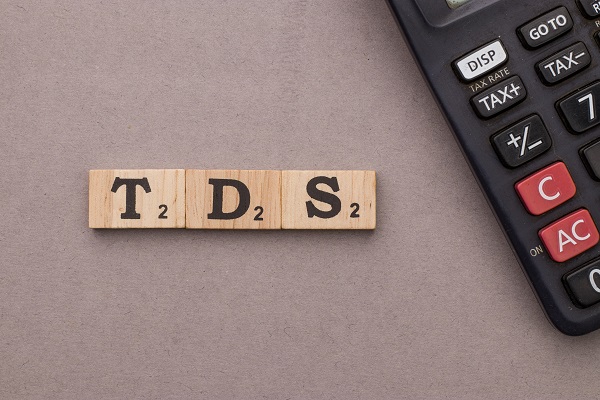TDS is calculated based on taxable income, and individuals can reduce TDS by investing in tax-saving schemes, opting for exemptions, and filing accurate tax returns.
Income tax is a mandatory deduction from an individual’s salary, payable to the government. The amount of Tax Deducted at Source is calculated based on the individual’s taxable income, which is the total income minus any exemptions or deductions. ‘
The purpose of deducting tax from an individual’s salary is to fund the government’s expenditures, such as infrastructure development, national defence, and social welfare programs.
The Process of Tax Deduction from Salary
The tax deduction process from an individual’s salary starts with the calculation of taxable income. Taxable income is calculated by subtracting any exemptions and deductions from the individual’s total income. The taxable income is then compared to the tax slab, a range of income levels and corresponding tax rates. The individual is liable to pay tax at the rate applicable to their taxable income.
Once the taxable income is calculated, the employer is responsible for deducting the tax from the employee’s salary and depositing it with the government. This process is known as TDS (Tax Deducted at Source) and is usually carried out every month. The employer calculates the tax based on the employee’s salary, exemptions, and deductions and deducts it from the salary before disbursing it to the employee.
How is Tax Deducted at Source (TDS) Calculated?
TDS is calculated based on the employee’s taxable income and the tax slab applicable to that income. The government decides the tax slab and can change from year to year based on the budget.
TDS is calculated using the following formula:
TDS = Taxable income x Tax rate
The tax rate is determined based on the tax slab applicable to the individual’s taxable income. For example, if an individual’s taxable income falls under the tax slab of ₹2.5 lakh to ₹5 lakh, the applicable tax rate would be 5%.
How to Claim Tax Deducted at Source (TDS)?
TDS is only a preliminary tax liability; individuals can claim it back if they are eligible. The final tax liability is calculated at the end of the financial year, and individuals can claim a refund if they have paid more tax than their actual liability.
Individuals need to file an Income Tax Return (ITR) to claim TDS. The ITR declares an individual’s income and tax liability for a financial year. The ITR contains details of the individual’s income, exemptions, deductions, and TDS. The tax department uses the information in the ITR to calculate the final tax liability and issue a refund if applicable.
Impact of TDS on an Employee’s Salary
Tax Deducted at Source can have a significant impact on an employee’s take-home salary. The amount of tax deducted is directly proportional to the individual’s taxable income. The higher the taxable income, the higher the amount of tax deducted.
TDS can also impact the employee’s financial planning, reducing the money available for saving and investment. However, TDS also ensures that individuals fulfil their tax obligation and that the government has sufficient funds to carry out its functions.
Tips to Minimize TDS Deduction from Salary
There are several ways in which individuals can minimize their TDS deduction from their salary. Some of these include:
Investing in Tax-Saving Instruments:
Individuals can invest in tax-saving instruments such as Public Provident Fund (PPF), National Pension System (NPS), and Equity-Linked Savings Scheme (ELSS) to reduce their taxable income. The investment made in these instruments is eligible for tax deductions, which can lower the individual’s taxable income and, in turn, reduce their Tax Deducted at Source.
Opting for Exemptions and Deductions
Individuals can claim exemptions and deductions such as House Rent Allowance (HRA), Leave Travel Allowance (LTA), and Section 80C investments to lower their taxable income. These exemptions and deductions are available to individuals who meet certain criteria, and they can reduce taxable income and TDS.
Filing Accurate Tax Returns:
It is important for individuals to file accurate tax returns, as this helps to ensure that the correct amount of TDS is deducted from their salary. If an individual’s tax returns are incorrect, it could result in an incorrect TDS calculation, leading to higher tax deductions from their salary.
Keeping Track of Tax Deducted at Source :
Individuals should keep track of the TDS deducted from their salary and ensure that it is in line with their actual tax liability. They can do this by checking their Form 16, a certificate the employer issued indicating the amount of TDS deducted.
Conclusion
Tax is an important aspect of an individual’s salary, and it is important for individuals to understand the process of Tax Deducted at Source and how it impacts their salary. By following the tips mentioned above, individuals can minimize their TDS deduction and fulfil their tax obligation while still having enough money available for their personal needs and financial goals.
It is also essential to file accurate tax returns and keep track of TDS, as this helps to ensure that the correct amount of TDS is deducted from the salary and that individuals are not overburdened with tax obligations.
Read more:










